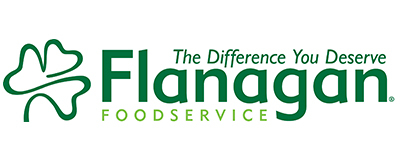
We collect basic website visitor information on this website and store it in cookies. We also utilize Google Analytics to track page view information to assist us in improving our website.
Though some restaurants sell art, sauces and clothes, most foodservice operators only sell the items listed on their menu, making menu space very valuable 'real estate.' And since operators are trying to maximize every sale from the menu, the profitability of each item must be accurately calculated, constantly updated, and forever analyzed.
With a fixed number of guests dining daily, the profit generated per item, or Food Margin, should be the primary consideration when developing a menu.
Traditionally, Food Cost has been the determining factor for menu development. While this method is a great system for managing the efficiency of an operation, controlling waste, over portioning, theft, etc., it does not address the "opportunity" of a menu item. Basing menu decisions solely on Food Cost lends to 'shopping on price' rather than 'shopping on quality'. In other words, purchases are limited to items that achieve a certain food cost while items that potentially contribute higher margins are not considered.
Beef consistently out-performs other proteins when it comes to Food Margin, often despite a higher Food Cost. Because of beef's perceived value, merchandising quality beef entrées on your menu is a sure way to increase the overall profitability of your operation. Not only will beef contribute to margins, a well-executed beef program will drive traffic to your restaurant, generating increased sales.
The process of merchandising a menu is sometimes referred to as Menu Engineering. This complex analysis looks at each item on a menu and how it contributes to the overall profitability of the menu as a whole. Savvy operators are constantly analyzing and tweaking their menus to generate top dollar.
Determining the cost and margin of a menu item is made relevant to your business when real sales data is collected. Most point-of-sales systems will do this job for you by providing a report listing each menu item and the corresponding number sold. The quantity sold is the relevant number for this comparison, not the sales ($) of each item.
Choose a period to collect data, or take a "snapshot" in time. We recommend a minimum of four weeks of data, though increasing the period provides better representation.
Obviously promotions or specials will skew the numbers so try to look at a period that is not influenced by incentives. Also, group the items by category, such as entrée, appetizer, salads, etc. For our examples, we will only be looking at entrées and how they perform against each other.
You will notice on the sample report that the New York steak represents only 14.8% of the sales mix but 32.6% of the revenue generated.
Food Margin, unlike Food Cost, measures dollars rather than percentages. After all, you bank dollars and your financial statements are based on dollars. To accurately calculate a plate's margin, like anything, you will need accurate inputs. This means that you must:
Use up-to-date pricing for all your ingredients. Prices change regularly. If you are using last year's pricing for striploins, your calculations will be out.
Account for any yield loss of the raw ingredients. For example, you may pay $14.00/ kg for a whole striploin but only use center-cut steaks in your dish. If the yield on your striploin is 63%, then you must apply the meat cost of the center-cuts only, $22.22/kg in this case.
Accurately measure the portion size for all ingredients.
Be certain that your calculations are carried through the operation and actually practiced. Otherwise, this will look great on paper but not be a true reflection of costs.
Account for any promotions: 2 for 1, 10% off, etc. These incentives should be worked into the plate's cost, rather than a promotional line item.
Sample Plate Calculator from Meat Financial Foods
Now you have the two critical numbers needed: Quantity Sold for the period and Food Margin for each item. Now we want to see how each stacks up against the others. Remember, we are comparing similar categories only.
The grid below plots both Food Margin and Quantity Sold. Regardless of the period you chose, all items plotted must be derived from the same period. The "X" (horizontal) axis measures Food Margin, with $0.00 at the bottom and the highest item's margin on the top. The "Y" (vertical) axis plots quantity sold, with "0 sold" on the bottom and the highest number sold on the top. Where the lines intersect is the midpoint for both margin and quantity. Now plot each item using the two axes as a reference.
The items that you plotted on the graph have fallen into one of four quadrants and each tells a story about the performance of that menu item. For reference, we will use the following names to refer to each zone and to the characteristics of the corresponding menu items too. This is where you take the emotion out of your menu. Forget about what you have offered since you first opened Grandma's famous recipe, or the dish that Mrs. Smith asks for once a month. Let the numbers speak for themselves.
The Dogs represent items that have Low Margins and Low Quantity sold. These are the "losers" on your menu and have probably seen their day. These items seldom sell and, when they do, produce small profits.
Recommendation: Remove most dogs from the menu as they are taking up valuable space. It may make sense to keep some of them where ingredients are shared with other item; In this case, the dogs should be "hidden", or downplayed on the menu.
The Plod Horses represent items that have Low Margins but a High Quantity sold. You can always count on Plod Horses to be popular dishes. Though they are not the highest profit generators, Plod Horses keep on selling.
Recommendation: Plod Horses are ideal candidates for modest price increases. Of course a slight increase in price may decrease quantity sold so the overall balance needs to be considered.
Puzzles are those items that have High Margins but have Low Quantity sold. You want to sell more Puzzles so added attention needed.
Recommendation: Reposition Puzzles on the menu, enhance them with colour, graphics, photos, etc. Draw your guests to the Puzzles through menu enhancement, promotion and staff knowledge.
Stars are the winners on the menu: High Margins and High Quantity sold. You want everything on your menu to move toward the Star quadrant. The nature of the four box analysis will not allow everything to be a star, though that should be the direction of the menu.
Recommendation: Don't mess with success. Stars need to be the center of the menu, enjoying prime marketing and be subjected to increased controls. Since you sell a lot of Stars, something like over-portioning by 1 oz. on a Star can have a dramatic impact on your margins.
Generally speaking, following the above recommendations will have a positive impact on the profitability of your menu. There is some consideration needed on where in a grid a particular item falls. For example, increasing the selling price of a Plod Horse that plots very close to the Star quadrant will be less affected in Quantity Sold than the same increase on an item further from the Star quadrant.
The science portion of the menu engineering involves the calculations and plotting. The numbers and implications this exercise will provide will lend some valuable insights to your menu opportunities. While we have outlined the theory of menu analysis, taking this information and applying it to a successful menu redesign may require professional services to make the most of it.
Information provided by The Canadian Beef Information Centre. Learn more here.

